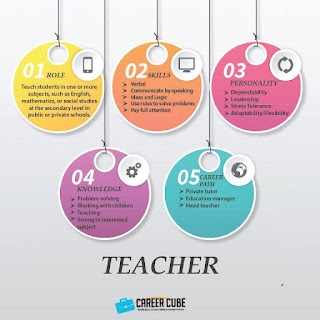Teaching Skills
Verbal: A teacher should use good words and not sneer at any party in front of his students.
Communication: When you become a teacher, you should know how to deal with your students and how to communicate with them "as a teacher and student".
Give full attention: A teacher must also give full attention to students while teaching because you will be teaching the students. If you are too "busy" with your cell phone, maybe one day the students will lose respect for you.
1. Focus attention and arouse students' interest.
Relating material to acute (current) news stories, especially those related to our student world.
Naturalize short stories related to learning materials that have been and will be studied.
Use tools in the form of media such as images, schematic models, videos, props and of course must be relevant to learning.
Change the teaching style such as classroom dominance by changing the position while delivering the learning, such as at the front, in the middle or at the back of the class.
Refers to assignments that have been given or owned by students.
Dealing with issues in the form of questions that need to be linked to student problems or activities.
2. Generate motivation
Providing warmth and enthusiasm to students, such as friendly, enthusiastic, friendly, warm and full of familiarity. Cultivate curiosity that can be stimulated by telling interesting stories, showing pictures, showing items. Presenting conflicting ideas. The idea of an opposing idea is an opinion that does not match what the student understands which is intended to trigger a student's response.3. Provide References
To give a brief overview of what students will learn in learning by outlining the learning objectives and delivering an outline of learning such as what activities will be carried out in groups, discussions, presentations.Planning the appropriate form of explanation
• The teacher needs to make a plan regarding the form of explanation
according to the student's ability i.e
- descriptive (give process, structure and procedure)
- interpretative (detailing the meaning of terms or statements),
- give a reason (give a reason for the occurrence of a phenomenon,
- provide steps – (to reach a conclusion).
• Appropriate information strategies can not only improve quality
the teacher's explanation, in fact, it will make one - one lesson
meaningful and enjoyable for students.
Preparation of examples, illustrations and auxiliary materials
• Examples, illustrations and supporting materials to be used must be prepared in advance.
• Examples should be simple and close to students, from the known to the unknown (will help increase student interest).
• Should be suitable and managed with teaching techniques that effective to maintain students' concentration and interest in teacher explanation.
• Teachers should encourage students to express their opinions and
accept students' opinions with an open heart.
Appropriate exposure time
• The time taken to explain is also unnecessary too long to bore students.
• Students - students will feel bored if they are told to sit down be quiet to listen to the teacher's explanation during the time period the old.
• Things will be more boring without it active involvement.
• A short period of time allows teachers to be left behind important words.
Ranking or organizing ideas
Events need to be explained according to the correct chronology and events mentioned first needs to be explained first.
To maintain students' interest in teacher explanation, various skills stimulation should be used, especially for explanations that require time which exceeds one minute.

Ulasan
Catat Ulasan